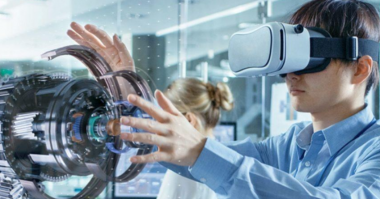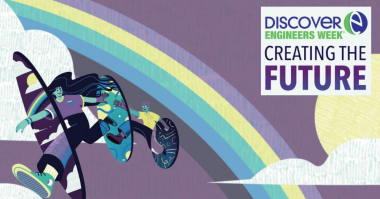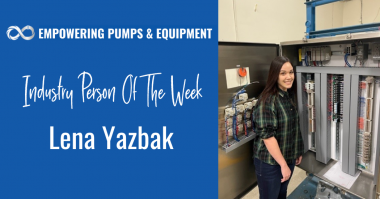Author: Steve Smith, President & Founder, TechValve Industries, LLC
The heart is the most precious pump. There are currently many Americans living with heart problems that deeply understand this fact. In 2015, roughly 750,000 Americans died from congestive heart failure. With about 30,000 donor hearts currently available each year, there is clearly an urgent need for artificial hearts.
Artificial hearts currently available to the public are really only “bridge-to-transplant”  options. They are temporary installations that are implanted to help patients in the most dire of situations. Once implanted, the artificial heart only lasts between 12 to 18 months before it breaks down and needs to be replaced.
options. They are temporary installations that are implanted to help patients in the most dire of situations. Once implanted, the artificial heart only lasts between 12 to 18 months before it breaks down and needs to be replaced.
As an engineer who has been designing pumps, valves, and fluid handling systems for many years, I decided to revisit a pump design I had started working on many years earlier. With technology being what it is today, I set out to design an artificial heart that would achieve three major goals:
- Make an artificial heart that can be more of a permanent solution – not just a “bridge-to-transplant” option. If we could provide patients on the heart-transplant list with an artificial heart that could operate for several years, maybe even decades, the need for donor hearts would decrease and additionally survival rates of patients might be improved.
- Design the artificial heart to be fully implantable. The most commonly implanted artificial hearts, which are essentially pneumatically-operated diaphragm pumps, require exterior devices. The pneumatically-operated artificial heart requires two air lines, an inlet and an outlet, to be inserted into the patient’s chest. The patient is always at risk of infection due to the tubes penetrating the patient’s skin. Therefore such areas have to be cleaned twice a day to avoid risk of infection. Moreover, patients have to carry an air compressor, which is battery-operated and can weigh up to 16 lbs. Designing an artificial heart that is fully implantable would eliminate the cumbersome task of carrying this excess weight. This would vastly improve the patient’s quality of life.
- Ensure the artificial heart is redundant. A major problem with the design of available artificial hearts is that there is currently no “back-up” mechanism. Patients who rely on pneumatically-operated artificial hearts can carry around a back-up compressor with batteries, but if something within that artificial heart fails, the person will be gone within minutes. Therefore, it would be critical to design a fully redundant artificial heart.
Using Turbine Technology to Create a Pulse-less Artificial Heart
In the past, many doctors tried designing artificial hearts to mimic the natural heart. These designs relied on some type of diaphragm or flexible membrane to move back and forth. The problem is that anything that flexes breaks down over time. In order to create an artificial heart that could operate reliably over a long period of time, we concluded that having a heartbeat just wasn’t necessary.
Using a quad-turbine based design, our Freedom Heart has two sides (similar to the left and right chambers of the heart) in which each side has two independent turbines. The turbines are driven by frameless servo motors, which supports redundancy. If one of the turbines fails, there are three more running turbines to ensure that the artificial heart does not fail altogether.
By running multiple turbines, we addressed an important issue concerning speed. An artificial heart driven by a single-turbine would have to spin at an extremely fast rate to provide adequate blood flow – at speeds around 25,000 RPM. Unfortunately, high speeds result in hemolysis of the blood being pumped (damage to and/or destruction of the red blood cells). By running multiple turbines and employing the principles of differential pressure, we were able to achieve the required pressure and flow at much slower speeds.
The Freedom Heart utilizes two micro controllers which are mounted on one board; so if one microprocessor fails, the other one takes over to keep the heart running. This revolutionary artificial heart is designed to have two inductive battery packs that can be fully implanted. This method of battery charging, known as induction, will enable patients to charge the Freedom Heart battery right through their skin (similar to an electric toothbrush being charged through the plastic). The Freedom Heart will also have Bluetooth as well as telemetry on board so if there is an anomaly of any kind, the patient and his or her physician along with everybody on the patient’s emergency contact list will receive a phone call. When the patient arrives at the doctor’s office, the Freedom Heart can be examined and adjusted, and if necessary adjusted wirelessly once the IP address is accessed.
Getting the Freedom Heart to Market
We’re currently working with attorneys to go through the FDA approval process. We hope to move forward with blood trials, followed by clinical trials, and hopefully, eventually human trials to make the Freedom Heart available to the public. While we wish this process would go more quickly, we recognize that it will be a few years before this life-changing pump will be available to help people who suffer with heart problems.
We anticipate that our patented design of the Freedom Heart – (being a servo-driven, quad-turbine based system) – will have a minimum of a 10 to 15-year life cycle. As the Freedom Heart will be encapsulated in bio-compatible materials, there will be no need for patients to take anti-rejection drugs. Patients will therefore save money on medications as well as avoid unwanted side effects from anti-rejection drugs. This will further improve a patient’s quality of life.
The Freedom Heart has been created to act as a permanent replacement for the natural heart. We’re hoping that instead of waiting for a donor heart, and risking kidney failure, liver failure, and other organ damage that can happen with a failing heart, a patient will have the option to replace his or her failing heart with a permanent solution. And maybe one day, choosing the Freedom Heart will be as commonplace as a hip replacement.
About the Author
Currently the Co-Program Director and Principal Investigator for California Cardiac Solutions, LLC., Steve Smith has over 12 years’ experience as a Director of Mechanical Engineering; having worked with factory automation, robotics, CNC/PLC computer controls and servo drive systems. Smith holds numerous patents and has 22 years of experience in the design, development, and manufacturing of high precision fluid metering systems and fluid control circuits.
For more information, visit www.techvalveind.com. You can contact Steve Smith at ssmith@techvalveind.com, or his associate, Glenn Dietz gdietz@kzagroup.com.





Comments